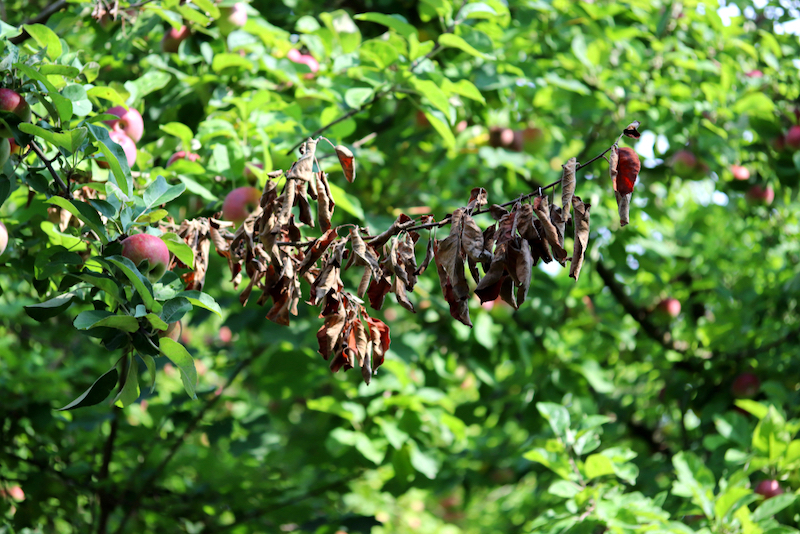So many issues can crop up when you start expanding your garden, and it can be intimidating to know how to deal with all of them. This article delves into the troubleshooting aspects of gardening, including pine needle management, crabapple trees, and fire blight infection on your pear trees.
Managing Pine Needles, Crabapple Fruits and Fire Blight
Q: We have been in this home for less than a year, and we are running into new landscape questions all the time. We have a very large white pine tree in the backyard. It is at least 80 feet tall. It has suddenly started dropping thousands of pine needles. We've been told this is normal, but it seems like a lot. They are hard to rake up. Can we just let them stay in the grass and mow them into mulch?
A: It is normal for evergreen trees to lose leaves in the fall, although not many do it as dramatically as pines. They drop three-year-old needles, and if the tree was healthy three years ago, it may have a lot of needles.
The needles do make good mulch. Try blowing most of them out of the grass first, and then what's left can be mowed down. Any tree or shrub leaves that are on a lawn can be mowed into mulch, but the remaining pieces need to be small enough to filter down to the soil and not cover the grass leaves. They contribute to the soil's organic matter.
Q: My crabapple tree is dropping fruit on the lawn. Each one is smaller than a penny in diameter, but they are covering the grass. Can I leave them?
A: Any fruit creates a thick enough layer to cover the grass should be removed. The decaying fruit could contribute to the soil's organic matter, but it would cause more problems than it's worth.
Fruit on the ground attracts mammals such as deer, raccoons and urban-tolerant animals that you probably don't want on your landscape. The droppings left behind by these animals have E. coli and other bacteria. Mowing the lawn would then spread the droppings and bacteria.
Additionally, decaying fruit often stinks and attracts wasps, bees, flies and other insects. Walking or mowing can be a problem if you disturb the insects.
The best thing to do is to keep the fruit picked up.
Q: My Bradford pear has several brown or black branches. The leaves look like they were scorched. What is the cause?
A: The tree has a bacterial disease called fire blight. In addition to the scorched look, you can spot fire blight when a branch bends down at its end like a shepherd's crook. This disease affects the rose family, including roses, apples, pears, crabapples, pyracantha, serviceberry, spirea, raspberry, mountain ash, quince and cotoneaster, among others.
The bacteria that cause fire blight survive winters in cracks or in damaged areas of stems and branches. In the spring, sap and bacteria ooze out of cracks and drip and splash onto young succulent growth, infecting it. Bees and other insects that feed on the sappy bacterial substance before pollinating a flower can also transfer the disease.
The bacteria move from the flower into the stems, causing the black shepherd's hook appearance. If the plant can wall off the stem, the bacteria will be limited to that area. If the plant doesn't stop the bacteria, they can move down into the trunk, where the disease can kill the whole plant. New infections can occur anytime pruning, insects, hail or wind damage stems, especially during warm and humid weather.
Usually, the disease doesn't spread rapidly. Diseased branches should be removed in the winter, when new infections won't start in the freshly cut ends. Make the cut at least a foot below the visibly damaged tissue. Sterilize the pruning tool between every cut so you don't transfer the bacteria to new branches or new susceptible plants.
An antibacterial spray labeled for fire blight should be applied in spring when the plants are in bloom, long before symptoms appear. Don't fertilize these plants, as fast-growing succulent tissue can be easily infected.
Save or share this infographic for reference: Managing Pine Needles, Crabapple Fruits and Fire Blight

Email questions to Jeff Rugg at [email protected]. To find out more about Jeff Rugg and read features by other Creators Syndicate writers and cartoonists, visit the Creators Syndicate website at www.creators.com.
COPYRIGHT 2017 JEFF RUGG
DISTRIBUTED BY CREATORS.COM



